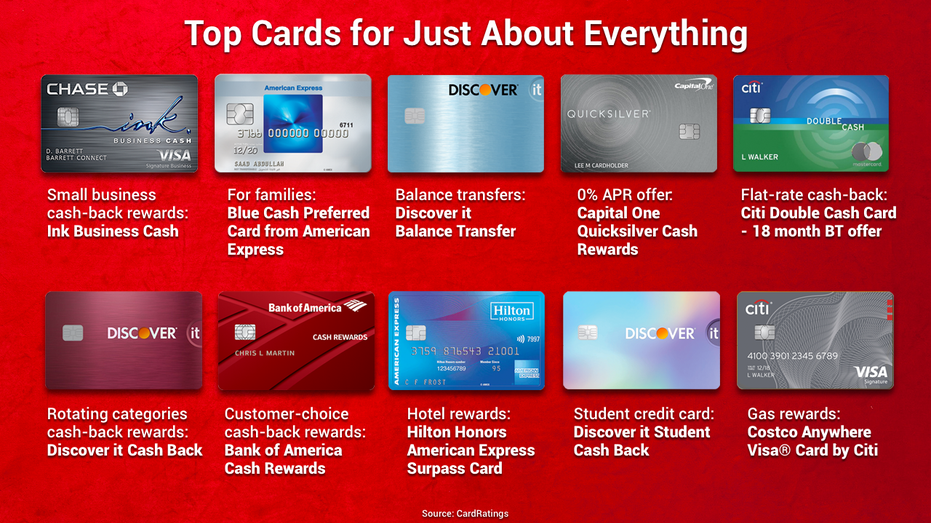How Bank Statements Can Impact Your Business Loan Application
Welcome, business owners! If you’re thinking about applying for a business loan, then you should be aware of how important your bank statements can be in the application process. Your bank statements provide lenders with a detailed look at your company’s financial health and can greatly impact their decision to approve or deny your loan request. In this article, we will explore how bank statements can influence your business loan application and what you can do to improve your chances of securing the funding you need. Let’s dive in!
Importance of Bank Statements for Business Loan Approval
Bank statements play a crucial role in the approval process for business loans. Lenders use these statements to assess the financial health of a business and determine its ability to repay the loan. By examining bank statements, lenders can gain valuable insights into a company’s cash flow, expenses, and overall financial stability. This information helps lenders evaluate the risk associated with lending money to a particular business.
One of the key reasons why bank statements are important for business loan approval is that they provide an accurate and up-to-date picture of a company’s financial situation. Lenders can see how much money is coming in and going out of the business, as well as how the company manages its cash flow. This information allows lenders to make informed decisions about whether or not to approve a loan application.
Bank statements also help lenders verify the information provided by the business owner in the loan application. By comparing the details in the application with the information in the bank statements, lenders can confirm the accuracy of the financial data provided. This verification process is essential for preventing fraud and ensuring that the loan is being issued to a creditworthy borrower.
In addition to verifying financial information, bank statements also allow lenders to assess the stability and consistency of a company’s income. Lenders look for regular deposits and steady cash flow in bank statements as evidence of a reliable source of income. This information helps lenders determine whether a business has the financial capacity to make regular loan payments without facing cash flow problems.
Furthermore, bank statements provide insight into a business’s spending habits and financial management practices. Lenders analyze the company’s expenses and outgoing payments to assess its financial responsibility and ability to handle debt. By reviewing bank statements, lenders can identify any red flags such as excessive withdrawals, unpaid bills, or inconsistent income, which may raise concerns about the business’s creditworthiness.
In conclusion, bank statements are a critical component of the business loan approval process. They offer lenders a comprehensive view of a company’s financial health and help assess its ability to repay the loan. By providing accurate and up-to-date financial information, bank statements play a vital role in determining whether a business qualifies for a loan and at what terms. Therefore, business owners should ensure that their bank statements are in order and reflect their financial stability to increase their chances of loan approval.
What Lenders Look for in Business Loan Bank Statements
Business loan bank statements are a crucial factor that lenders consider when evaluating a loan application. Lenders look at bank statements to assess the financial health of a business, determine the level of risk involved in lending to the business, and make a decision on whether to approve or deny the loan request. Here are some key things that lenders look for in business loan bank statements:
1. Cash flow: One of the most important things that lenders look for in business loan bank statements is the cash flow of the business. Lenders want to see a consistent and healthy cash flow that demonstrates the ability of the business to generate enough income to cover its expenses and repay the loan. A positive cash flow shows that the business is financially stable and has the means to repay the loan on time.
2. Revenue trends: Lenders also pay close attention to the revenue trends reflected in the business loan bank statements. They want to see that the business is growing and increasing its revenue over time. Negative revenue trends or declining sales could be a red flag for lenders, as it may indicate that the business is struggling or facing financial challenges. On the other hand, steady revenue growth demonstrates that the business is on a positive trajectory and has the potential to repay the loan successfully.
3. Expenses: Lenders review the expenses listed in the business loan bank statements to get an understanding of how the business is managing its costs. They want to see that the business is operating efficiently and keeping its expenses in check. High expenses relative to revenue could signal financial instability and make lenders hesitant to approve a loan. Lenders also look for any irregular or excessive expenses that could indicate poor financial management.
4. Debt obligations: Lenders assess the level of existing debt obligations that the business has when reviewing the bank statements. They want to see that the business is managing its existing debts responsibly and has the capacity to take on additional debt through a loan. High levels of debt or missed payments on existing loans could raise concerns for lenders and impact their decision to approve a new loan.
5. Financial stability: Overall, lenders look for signs of financial stability and viability in the business loan bank statements. They want to see a strong financial track record, with positive cash flow, growing revenue, manageable expenses, and responsible debt management. A business that demonstrates financial stability through its bank statements is more likely to secure a loan approval from lenders.
Tips for Organizing and Presenting Bank Statements for a Business Loan
When applying for a business loan, one of the key documents that lenders will request is your bank statements. These statements provide crucial information about your company’s financial health and can play a significant role in the approval process. To ensure that your bank statements make a positive impression on lenders, it’s important to organize and present them in a clear and professional manner. Here are some tips to help you do just that:
1. Be Specific and Transparent: When submitting your bank statements, make sure to include all relevant information. This includes statements from all business accounts, as well as any personal accounts that are linked to the business. Transparency is key, so be honest about any fluctuations or irregularities in your cash flow. Lenders appreciate honesty and will view your application more favorably if you are upfront about any financial challenges your business may be facing.
2. Use Proper Formatting: To make it easier for lenders to review your bank statements, be sure to format them properly. This means organizing them chronologically and labeling each statement with the corresponding time period. If you have multiple accounts, consider color-coding or numbering them for easy reference. Additionally, make sure that the statements are legible and free of any smudges or tears. A clean, well-organized set of bank statements shows that you are detail-oriented and serious about your loan application.
3. Provide Context: While bank statements provide raw data about your company’s finances, they may not tell the whole story. To give lenders a clearer picture of your business’s financial health, consider providing a summary or explanation alongside your statements. This could include a brief overview of your company’s financial goals, recent successes, or challenges. By contextualizing your bank statements, you can help lenders understand the reasons behind any fluctuations or anomalies in your cash flow.
4. Highlight Positive Trends: When presenting your bank statements, be sure to point out any positive trends or accomplishments. This could include increases in revenue, successful investments, or cost-saving measures. By drawing attention to these achievements, you can showcase your company’s financial stability and potential for growth. Lenders want to see that your business is on the right track, so highlighting your successes can strengthen your loan application.
5. Seek Professional Assistance: If you’re unsure about how to properly organize and present your bank statements, consider seeking help from a financial advisor or accountant. These professionals can offer valuable insights and guidance on how to best showcase your company’s financial health. They can also help you identify any areas that may raise concerns for lenders and provide advice on how to address them. Investing in professional assistance can improve your chances of securing a business loan.
By following these tips for organizing and presenting your bank statements, you can improve your chances of securing the business loan you need. Remember, first impressions matter, so make sure your bank statements reflect your company’s financial strength and stability. With a clear, well-organized set of statements, you can confidently demonstrate to lenders that your business is a smart investment. Good luck!
Common Mistakes to Avoid When Submitting Bank Statements for a Business Loan
When applying for a business loan, providing accurate and detailed bank statements is crucial. Lenders rely on these documents to assess the financial health and stability of your business, so it’s important to avoid common mistakes that could negatively impact your loan application.
1. Incomplete or Missing Statements:
One of the most common mistakes that applicants make is submitting incomplete or missing bank statements. Remember that lenders need to see a complete picture of your business’s financial history, so make sure to provide statements for all relevant accounts for the required time period. Missing or incomplete statements can lead to delays in the loan approval process or even result in your application being rejected.
2. Not Reviewing Statements for Errors:
Before submitting your bank statements, take the time to review them carefully for any errors or discrepancies. This includes checking for missing transactions, incorrect balances, or any other inaccuracies. Lenders will scrutinize these statements, so ensuring their accuracy can help build trust and credibility with the lender. If you notice any errors, contact your bank to address and correct them before submitting your application.
3. Mixing Personal and Business Expenses:
It’s essential to keep your personal and business finances separate, especially when it comes to bank statements. Mixing personal and business expenses can make it difficult for lenders to assess the financial stability of your business accurately. To avoid this mistake, maintain separate bank accounts for your personal and business finances, and ensure that all business-related transactions are clearly identified on your statements.
4. Failure to Explain Large Deposits or Withdrawals:
One common mistake that applicants make when submitting bank statements is failing to provide explanations for large deposits or withdrawals. Lenders may question the source of funds for these transactions, and not providing a clear explanation can raise red flags. If you have any large deposits or withdrawals on your bank statements, be prepared to provide documentation or explanations to support them. This could include invoices, receipts, or any other relevant information that can help clarify the nature of these transactions.
5. Ignoring Negative Balances or Overdrafts:
Negative balances or frequent overdrafts on your bank statements can indicate financial instability to lenders. Ignoring these issues or failing to address them proactively can hurt your chances of securing a business loan. If you have negative balances or overdrafts on your statements, be prepared to explain the circumstances that led to these situations and demonstrate how you plan to address them moving forward.
By avoiding these common mistakes when submitting bank statements for a business loan, you can improve your chances of a successful loan application. Remember to provide complete and accurate statements, review them for errors, keep personal and business finances separate, explain large transactions, and address any negative balances or overdrafts proactively. This will help lenders assess your business’s financial health more effectively and increase your likelihood of securing the funding you need.
How to Interpret Bank Statements to Improve Business Loan Eligibility
When applying for a business loan, one of the key factors that lenders will look at is your bank statements. Your bank statements provide a window into the financial health of your business and can play a crucial role in determining whether you are approved for a loan. Understanding how to interpret your bank statements can help you present your financial situation in the best possible light and improve your chances of securing a business loan.
Here are some tips on how to interpret bank statements to improve your business loan eligibility:
1. Review Your Average Monthly Balance: Lenders will often look at your average monthly balance to assess your cash flow and determine whether you have enough funds to cover loan repayments. A higher average monthly balance can demonstrate that your business is financially stable and can afford to take on additional debt.
2. Identify Regular Cash Inflows: Lenders will also want to see a consistent source of income coming into your business. Look for regular cash inflows from sales, investments, or other revenue streams. Demonstrating a steady income can reassure lenders that you have the means to repay the loan.
3. Monitor Your Expenses: In addition to your income, lenders will pay close attention to your expenses. Take note of any recurring expenses, such as rent, utilities, payroll, and supplies. Be prepared to explain any large or irregular expenses that may raise red flags for lenders.
4. Check for Overdrafts or Bounced Checks: Overdrafts and bounced checks can be a red flag for lenders, indicating that your business may be struggling to manage its finances. Take steps to avoid overdrafts and ensure that there are sufficient funds in your account to cover all expenses.
5. Compare Year-Over-Year Performance: One way to showcase the financial health and growth of your business is by comparing your bank statements year-over-year. Look for trends in your income, expenses, and cash flow. Highlight any improvements or growth in your business that may help to support your loan application.
By understanding how to interpret your bank statements and presenting your financial information in a clear and organized manner, you can improve your business loan eligibility and increase your chances of securing the financing you need to grow and succeed.






